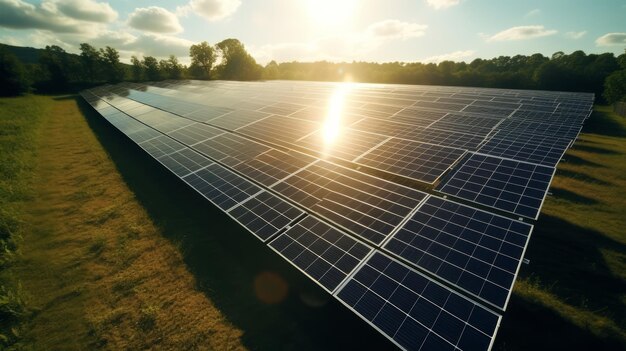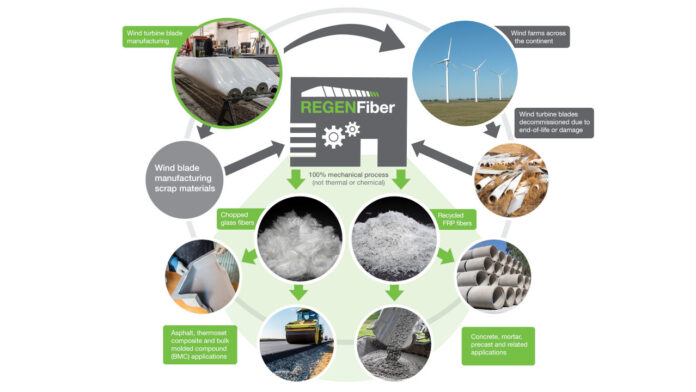
Vertical Axis Wind Turbines: Unveiling Efficiency & Aesthetics in Modern Wind Power
For most people, the image of a wind turbine conjures up colossal structures with three massive blades gracefully slicing through the sky – these are known as Horizontal Axis Wind Turbines (HAWTs). But what if there was another way to harness the wind, one that was perhaps more discreet, quieter, and could even become a striking part of our urban landscapes?
Enter the Vertical Axis Wind Turbine (VAWT). These fascinating machines stand apart by rotating around a vertical axis, offering a fresh perspective on wind energy generation. Once overshadowed by their horizontal counterparts, VAWTs are rapidly gaining attention for their unique blend of efficiency in specific environments and their undeniable aesthetic appeal.
In this comprehensive guide, we’ll delve into the world of Vertical Axis Wind Turbines, exploring their innovative designs, practical efficiencies, and how they are redefining what sustainable energy can look like.
What Exactly Are Vertical Axis Wind Turbines (VAWTs)?
Imagine an egg beater or a giant barrel spinning in the wind, rather than a propeller. That’s the simplest way to visualize a VAWT. Unlike HAWTs, which need to "point" into the wind, VAWTs are omnidirectional – meaning they can capture wind coming from any direction without needing to adjust their position. This fundamental difference opens up a world of possibilities, especially in challenging or unpredictable wind environments.
Key Characteristics of VAWTs:
- Vertical Rotation: The main rotor shaft is set vertically.
- Omnidirectional: No need for a "yaw" mechanism to turn into the wind.
- Ground-Level Components: Most of the heavy generating components (gearbox, generator) are located at the base, making maintenance easier and safer.
- Diverse Designs: VAWTs come in various shapes, each with its own advantages.
A Look at the Different Faces of VAWTs
While all VAWTs share the vertical axis principle, their designs vary significantly, impacting how they interact with the wind and their overall performance. The two most common types are:
-
Savonius VAWTs:
- Appearance: Often resembles two or more scoops or half-barrels stacked vertically.
- How they work: They operate based on the principle of drag. Wind pushes against the concave (curved in) side of the scoop, causing it to spin.
- Pros:
- Excellent at starting in very low wind speeds.
- Simple design and robust construction.
- Generate high starting torque (the twisting force that gets it moving).
- Cons: Generally lower overall efficiency compared to other types.
- Best for: Applications where low wind speed performance and reliability are paramount, such as small-scale battery charging or water pumping.
-
Darrieus VAWTs:
- Appearance: Often described as looking like an "egg beater" or having curved, airfoil-shaped blades. Modern versions include the "H-rotor" or "Giromill" designs, which have straight vertical blades resembling an "H."
- How they work: They operate primarily on the principle of lift, similar to an airplane wing. As the blades move through the air, they create lift, which drives the rotation.
- Pros:
- Potentially higher efficiency than Savonius types in moderate to high winds.
- Can achieve higher rotational speeds.
- Cons:
- May require an external push or a small motor to start rotating (low starting torque).
- More complex blade design.
- Best for: Applications requiring more power output, such as residential or small commercial power generation.
Modern designs often incorporate helical (twisted) blades, which combine some of the benefits of both types, improving self-starting capabilities and reducing pulsations.
The Efficiency Angle: Are VAWTs Practical for Power Generation?
When we talk about wind turbine efficiency, we’re generally referring to how much of the wind’s kinetic energy (energy of motion) a turbine can convert into electricity. While HAWTs currently dominate the large-scale wind farm market due to their higher peak efficiency in consistent wind, VAWTs offer a compelling set of efficiency advantages in specific niches.
Where VAWTs Shine in Efficiency:
- Low Wind Speed Performance: Many VAWT designs (especially Savonius types and newer helical Darrieus designs) are excellent at starting up and generating power in very light breezes. This is a huge advantage in urban or residential areas where wind speeds are often lower and more variable.
- Omnidirectional Advantage: Because they don’t need to orient themselves into the wind, VAWTs capture wind from any direction instantly. This is crucial in turbulent environments (like cities with buildings) where wind direction can shift rapidly and unpredictably. HAWTs lose energy and time by "yawing" (turning) to face the wind.
- Reduced Turbulence Impact: Urban environments are notoriously turbulent due to buildings and obstructions creating swirling wind patterns. VAWTs, with their vertical design, are often less affected by these complex airflows, maintaining more consistent performance.
- Lower Cut-in Speed: This refers to the minimum wind speed required for the turbine to start generating power. VAWTs often have a lower cut-in speed than many HAWTs, meaning they start producing electricity sooner.
- Less Maintenance Downtime: With the generator and gearbox at ground level, maintenance is simpler, quicker, and safer, leading to more uptime and efficient power generation over the turbine’s lifespan.
Addressing Perceived Efficiency Challenges:
Historically, VAWTs were considered less efficient than HAWTs. While it’s true that large, utility-scale HAWTs can capture a higher percentage of wind energy under ideal, consistent wind conditions, this comparison often overlooks the specific environments where VAWTs excel.
- The "Betz Limit": This is a theoretical maximum (around 59.3%) of wind energy that any wind turbine can ever capture. Both HAWTs and VAWTs are subject to this limit. While HAWTs often get closer to this limit in open, steady winds, VAWTs compensate by capturing wind more effectively in less-than-ideal, real-world conditions.
- Ongoing Innovation: Significant research and development are improving VAWT blade design, materials, and control systems, steadily boosting their efficiency and making them more competitive. Advanced computational fluid dynamics (CFD) are allowing engineers to optimize blade shapes for maximum lift and minimal drag.
In essence, VAWTs redefine "efficiency" not just as peak power output, but as effective power generation in diverse and challenging wind environments.
The Aesthetics Angle: Beauty in Motion?
One of the most compelling arguments for the wider adoption of Vertical Axis Wind Turbines is their unique visual appeal. In a world increasingly focused on integrating technology seamlessly into our daily lives, VAWTs offer a refreshing alternative to the often imposing presence of traditional turbines.
Why VAWTs are Visually Appealing:
- Sleek and Modern Design: Many VAWTs, particularly the H-rotor and helical designs, possess a minimalist, sculptural quality. Their vertical orientation and often smooth, continuous lines can make them look more like modern art installations than industrial machinery.
- Less Visually Intrusive: Unlike HAWTs with their sweeping blades, VAWTs have a more contained footprint. They don’t create the same sense of scale or movement across a wide area, making them feel less dominant in a landscape.
- Blends with Architecture: Their vertical form allows them to integrate more harmoniously with existing buildings and urban structures. They can be mounted on rooftops, integrated into building facades, or stand as standalone features without clashing with the surrounding environment.
- Reduced Shadow Flicker: HAWTs can create a distracting "shadow flicker" effect as their blades pass in front of the sun. VAWTs, with their often solid or more compact designs, significantly reduce or eliminate this issue, contributing to a more pleasant environment.
- Perception of Safety: The blades of VAWTs are typically closer to the ground and rotate at slower tip speeds than HAWTs, making them appear safer and less intimidating, especially in public spaces.
Beyond Just Looks: How Aesthetics Influence Acceptance
The visual appeal of VAWTs isn’t just about pretty pictures; it has a profound impact on public acceptance and widespread adoption of wind energy.
- Community Integration: When renewable energy sources are seen as attractive additions rather than necessary eyesores, communities are more likely to embrace them. This is particularly relevant for urban and residential deployments.
- "Green" Branding: For businesses and institutions, a visually appealing VAWT can serve as a powerful symbol of their commitment to sustainability, enhancing their public image.
- Noise Reduction: While not strictly an aesthetic, the typically quieter operation of VAWTs (due to lower tip speeds and less aerodynamic noise) contributes significantly to their overall "aesthetic" experience, as noise pollution is a major detractor for wind energy projects. Quiet operation makes them suitable for residential areas without disturbing inhabitants.
Beyond Efficiency & Aesthetics: Other Key Benefits of VAWTs
While efficiency and aesthetics are major selling points, VAWTs offer a host of other advantages that make them a compelling choice for various applications:
- Wildlife Friendliness: The solid, upright structure and often slower rotational speeds of VAWT blades make them more visible to birds and bats, significantly reducing the risk of collisions compared to fast-moving HAWT blades.
- Lower Noise Output: As mentioned, VAWTs generally produce less noise than HAWTs. This is crucial for urban and suburban environments where noise pollution is a significant concern.
- Smaller Footprint: Many VAWT designs are compact, requiring less ground space for installation, making them ideal for smaller plots of land or crowded urban settings.
- Easier Maintenance: With most mechanical and electrical components located at the base of the turbine, maintenance and repairs are simpler, safer, and don’t require specialized lifting equipment or climbing at heights.
- Scalability: VAWTs can be scaled down effectively for micro-generation (e.g., streetlights, individual homes) or scaled up for small to medium commercial applications.
- Resilience to High Winds: Some VAWT designs are inherently more robust in very high winds, as the vertical structure can withstand forces more evenly distributed across the blades.
Challenges and the Road Ahead for VAWTs
Despite their numerous advantages, VAWTs still face hurdles that prevent their widespread dominance:
- Cost: Currently, the manufacturing cost per kilowatt of power generated can be higher for VAWTs compared to large HAWTs, though this is changing with economies of scale and design optimization.
- Market Perception: The public and even some developers are more familiar with traditional HAWTs, leading to a slower adoption curve for VAWTs.
- Aerodynamic Complexity: While omnidirectional is a plus, the aerodynamics of VAWTs can be more complex to model and optimize, making design improvements challenging.
- Efficiency Gap (in ideal conditions): For very large-scale wind farms in open, consistent wind, HAWTs still offer better peak power output.
However, the future for VAWTs looks bright. Continuous research and development, combined with a growing demand for localized, quiet, and aesthetically pleasing renewable energy solutions, are pushing VAWT technology forward. Innovations in materials, smart control systems, and modular designs are making VAWTs more efficient, durable, and cost-effective than ever before.
VAWTs in the Real World: Applications
VAWTs are finding their niche in a variety of exciting applications:
- Urban and Residential: Powering individual homes, apartment buildings, and small businesses in cities.
- Street Lighting: Integrated into smart streetlights, providing power for illumination and charging stations.
- Telecommunications Towers: Providing off-grid power for remote cell towers.
- Off-Grid Systems: Ideal for remote cabins, farms, or disaster relief efforts where grid connection is unavailable.
- Marine Applications: Used on boats or offshore platforms due to their stability and omnidirectional nature.
- Hybrid Systems: Often paired with solar panels to create highly resilient and consistent renewable energy systems.
Conclusion: The Future is Vertical
Vertical Axis Wind Turbines are more than just an alternative to traditional wind power; they represent a paradigm shift in how we can integrate wind energy into our built environments. By offering a unique combination of efficiency in turbulent, low-wind conditions and an unparalleled aesthetic appeal, VAWTs are poised to play a crucial role in the global transition to renewable energy.
As urban populations grow and the demand for discreet, quiet, and visually harmonious energy solutions increases, VAWTs will undoubtedly rise to the occasion, transforming cityscapes into sustainable power hubs and demonstrating that clean energy can be both powerful and beautiful. The wind’s embrace is no longer just horizontal; it’s increasingly vertical, elegant, and perfectly integrated.



Post Comment